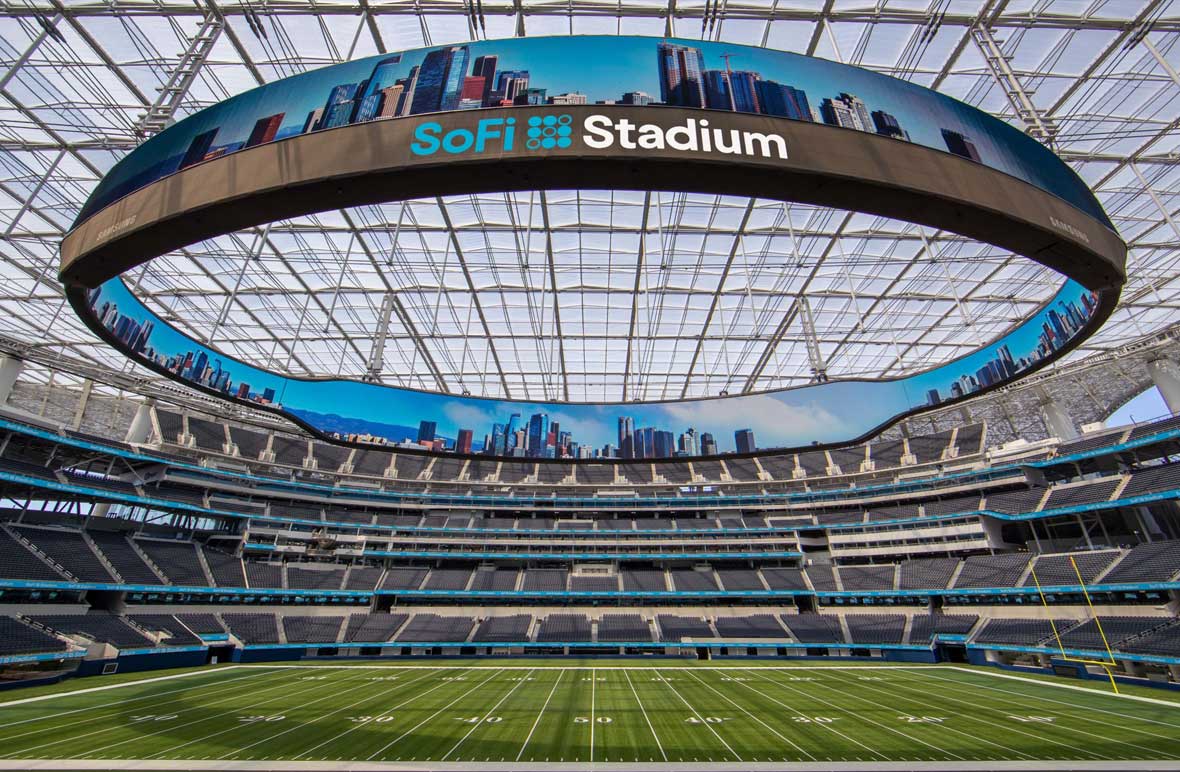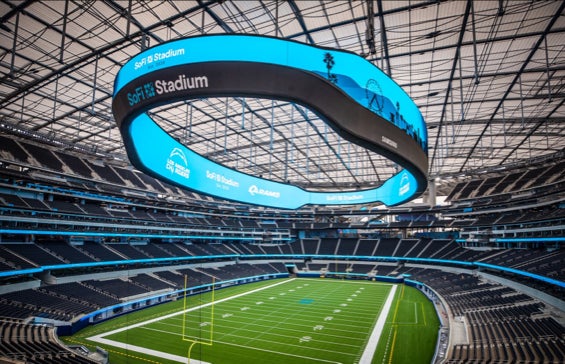
Hollywood Park’s Landscape Design Delivers on Sustainability and Maximizes Open Space to Create 25-acres of Public Parks and Open Space for Community
Innovative Water Retention and Recycling System and 100 Percent Southern California-Native Plant Species at Core of Program that Focuses on Environmentally Sound Landscape Solutions LOS ANGELES (April 22, 2022) —SoFi Stadium and Hollywood Park, a near 300-acre sports and entertainment destination being developed by Los Angeles Rams Owner/Chairman E. Stanley Kroenke, worked with Studio MLA, a landscape architecture and urban design studio, to create civic and environmentally conscious landscape solutions across three key areas: water capture and reuse, the utilization of 100 percent Southern California-native plant species, and the continued development of public parks for year-round use. SoFi Stadium and Hollywood Park’s focus on sustainable landscape solutions and water conservation led to the creation of Lake Park, which functions as open recreational space for the community and a novel water recycling system. Inspired by the original water feature that was part of the former Hollywood Park racetrack, Lake Park consists of an upper and lower lake separated by cascading waterfalls. At approximately 6 acres and 16 million gallons of water, the lake is surrounded by an additional 6 acres of parkland. The lake functions as a water recycling system by collecting 70-80 percent of stormwater runoff from around the site, filtering it through natural wetlands and mechanical systems, and then using it to irrigate the surrounding parkland. SoFi Stadium and Hollywood Park worked with the West Basin Municipal Water District to provide recycled water for the rest of the project’s landscaped areas. Through its relationship with the West Basin Municipal Water District, SoFi Stadium and Hollywood Park are able utilize about 26 million gallons of recycled water per year, which saves an equal amount of drinking water for the region. “SoFi Stadium and Hollywood Park were designed to take advantage of Los Angeles’ indoor-outdoor lifestyle,” said Jason Gannon, managing director, SoFi Stadium and Hollywood Park. “Sustainable, environmentally conscious spaces are not just a benefit for our community and guests to enjoy, they are also one of the key ways we reduce our environmental impact.” As the first indoor-outdoor stadium, SoFi Stadium was designed to take advantage of the unique environment Los Angeles provides. The stadium’s landscape architecture seamlessly merges with the surrounding Hollywood Park to emanate a design style that is true to Southern California’s landforms and natural aesthetic. Among the many notable features of the landscape design at the stadium are three terraced gardens or “canyons” that sit on the north, west, and east side of the building. Each of the canyon’s landscape draws from a particular biogeographic zone in California. For example, where sunlight is more present in the north canyon, a desert garden is featured. In the shadier east canyon, vegetation mirrors upper and lower montane areas of the state. In the west-facing canyon, the plants reflect low-elevation chaparral and riparian ecosystems. “It’s all about how a stadium becomes part of a landscape and the landscape becomes part of the stadium,” said Mia Lehrer, FASLA, President of Studio-MLA. “With a pioneering project team, we’re honored to help imagine, design, and build this extensive stadium landscape, Lake Park and Hollywood Park’s public spaces, validating how this revolutionary sports stadium brings fans together on game days and functions as a vital public open space for people year-round.” Additionally, the site’s over 5,000 trees and many species of plants are all native to Southern California and represent the five main ecologies that make up the mediterranean biome that Southern California inhabits. By purposefully selecting plants and trees that are native to the region, it promotes the regeneration of habitats that were previously missing in the area and encourages the return of native wildlife such as warblers, honeybees and more. The landscape design is not only striking, but it also simultaneously makes a significant contribution to the environment with close to 240,000 pounds of CO2 sequestered per yearby the thousands of trees on site. SoFi Stadium and Hollywood Park sits at the intersection of where design meets function. The site functions as a sports and entertainment destination and will be complemented by robust retail, residential and office offerings. However, it also serves as a civic center for its surrounding community. When Hollywood Park is complete, the site will deliver 25 acres of public parks and open space for the community to enjoy and utilize year-round. ### ABOUT SOFI STADIUM SoFi Stadium, the home of the Los Angeles Rams and Los Angeles Chargers, is located at Hollywood Park, a near 300-acre sports and entertainment destination being developed by Los Angeles Rams Owner/Chairman E. Stanley Kroenke in Inglewood, Calif. The 3.1 million square-foot SoFi Stadium is the largest stadium in the NFL, as well as the first indoor-outdoor stadium. It seats approximately 70,000, expandable up to 100,000, with more than 260 luxury suites and more than 13,000 premium seats. SoFi Stadium was host to Super Bowl LVI and will host the College Football National Championship Game in 2023, and the Opening and Closing Ceremonies of the Olympic Games in 2028. Adjacent to the stadium and sitting under the same roof canopy is the 2.5-acre American Airlines Plaza and the 6,000-seat YouTube Theater. For more information about SoFi Stadium, visit www.SoFiStadium.com or @SoFiStadium on Instagram, Facebook, Twitter and YouTube. ABOUT STUDIO-MLA Founded in 1995, Studio-MLA is a design studio that integrates landscape architecture, urban design, and planning to create places that inspire human connection, unite communities, and restore environmental balance. Advocacy is a foundation of Studio-MLA’s practice — a powerful tool to catalyze ecological and social change with inclusivity and authenticity. For more than 25 years, founder and president Mia Lehrer, FASLA, has sparked inventive thinking to address complex relationships within urban and natural environments. From the master planning of cities to the design of intimate plazas and gardens, the studio is recognized for creativity, pragmatism, and responsibility across a range of scales and geographies. With offices in Los Angeles and San Francisco, a 45-person team includes landscape architects, designers, planners, botanists, and ecologists from around the world. Diversity and multiple perspectives add meaning to collaborations and value to outcomes. Together, these practitioners believe in the transformative power of design to recalibrate the natural and built environments that connect us.




